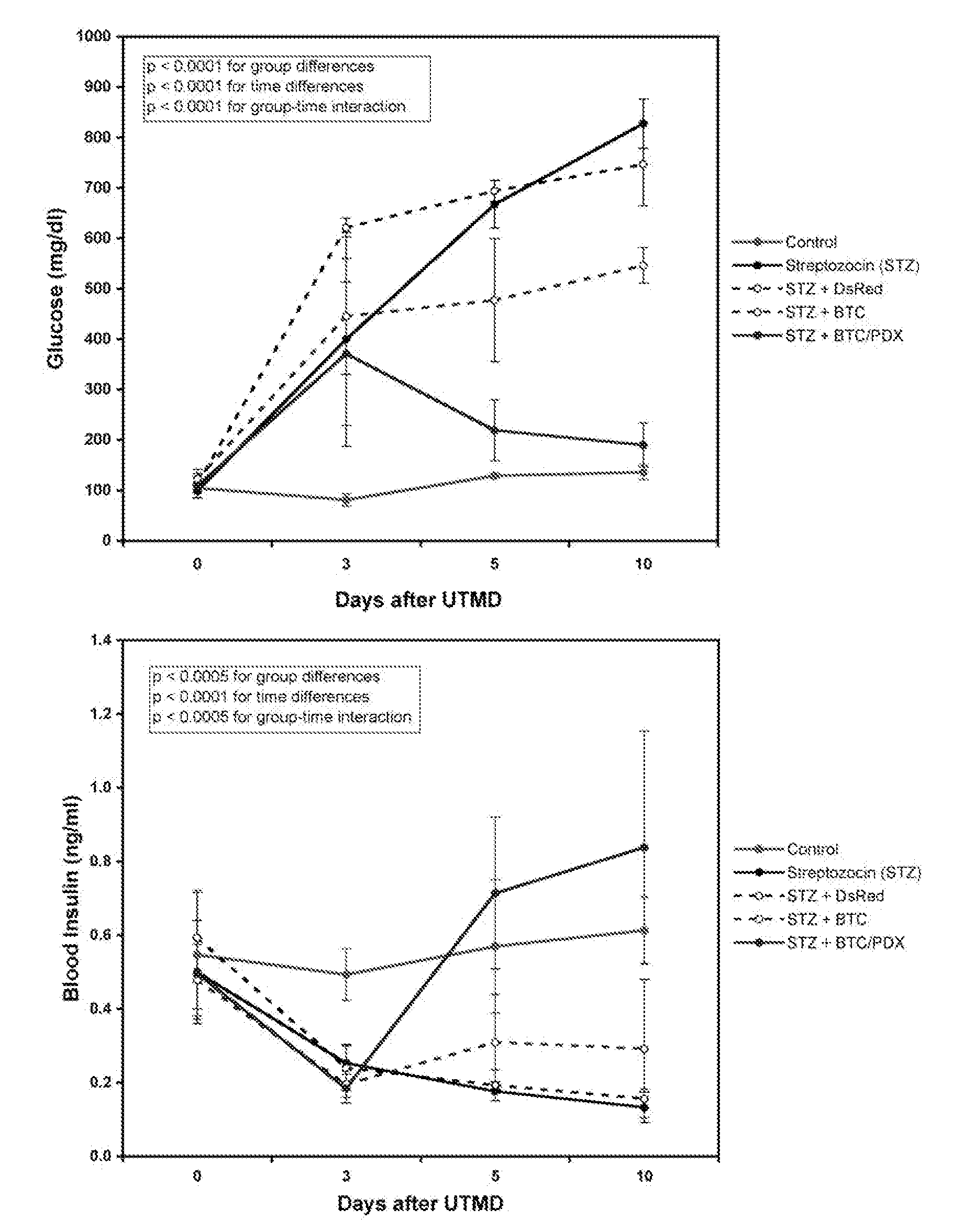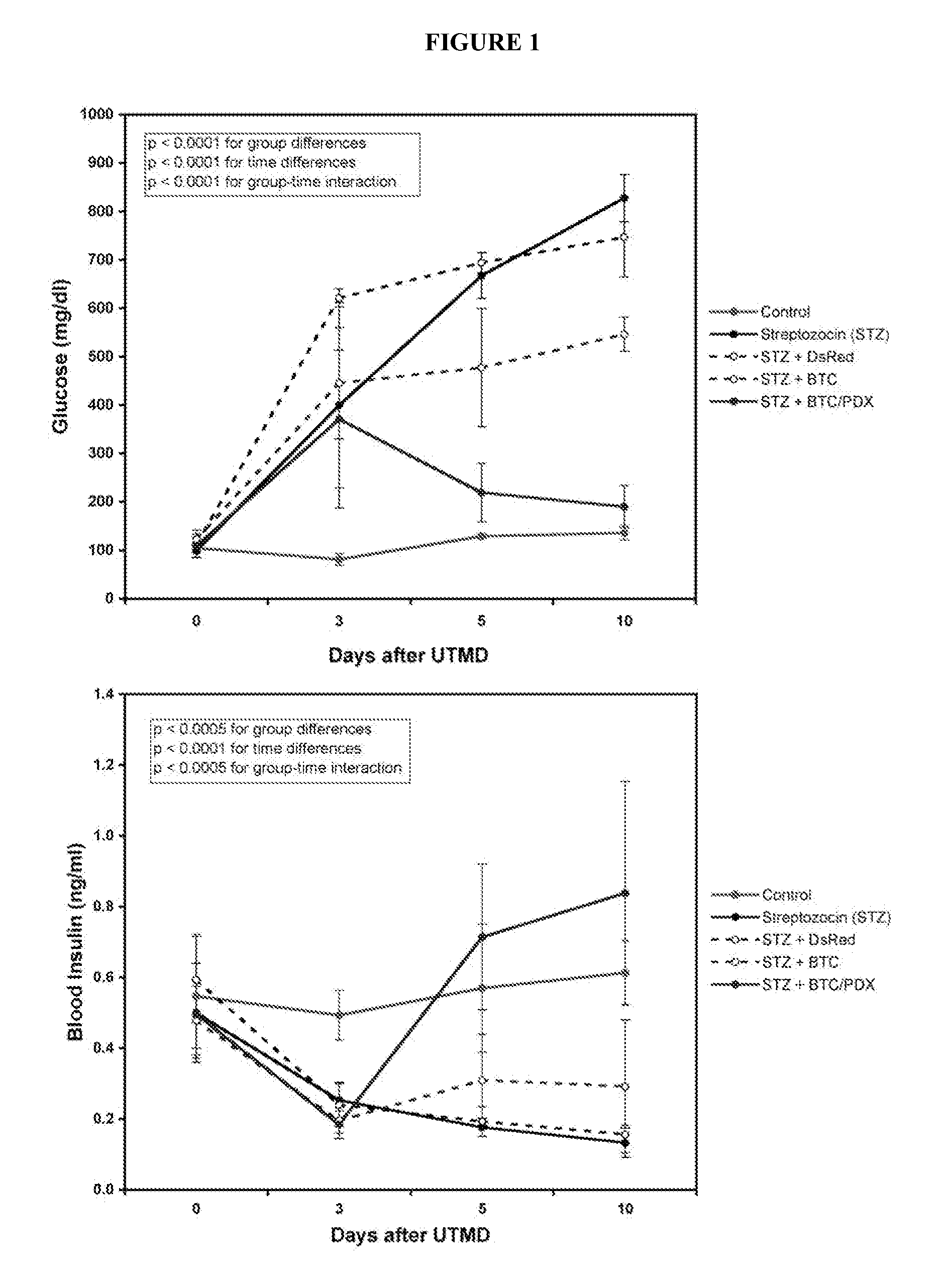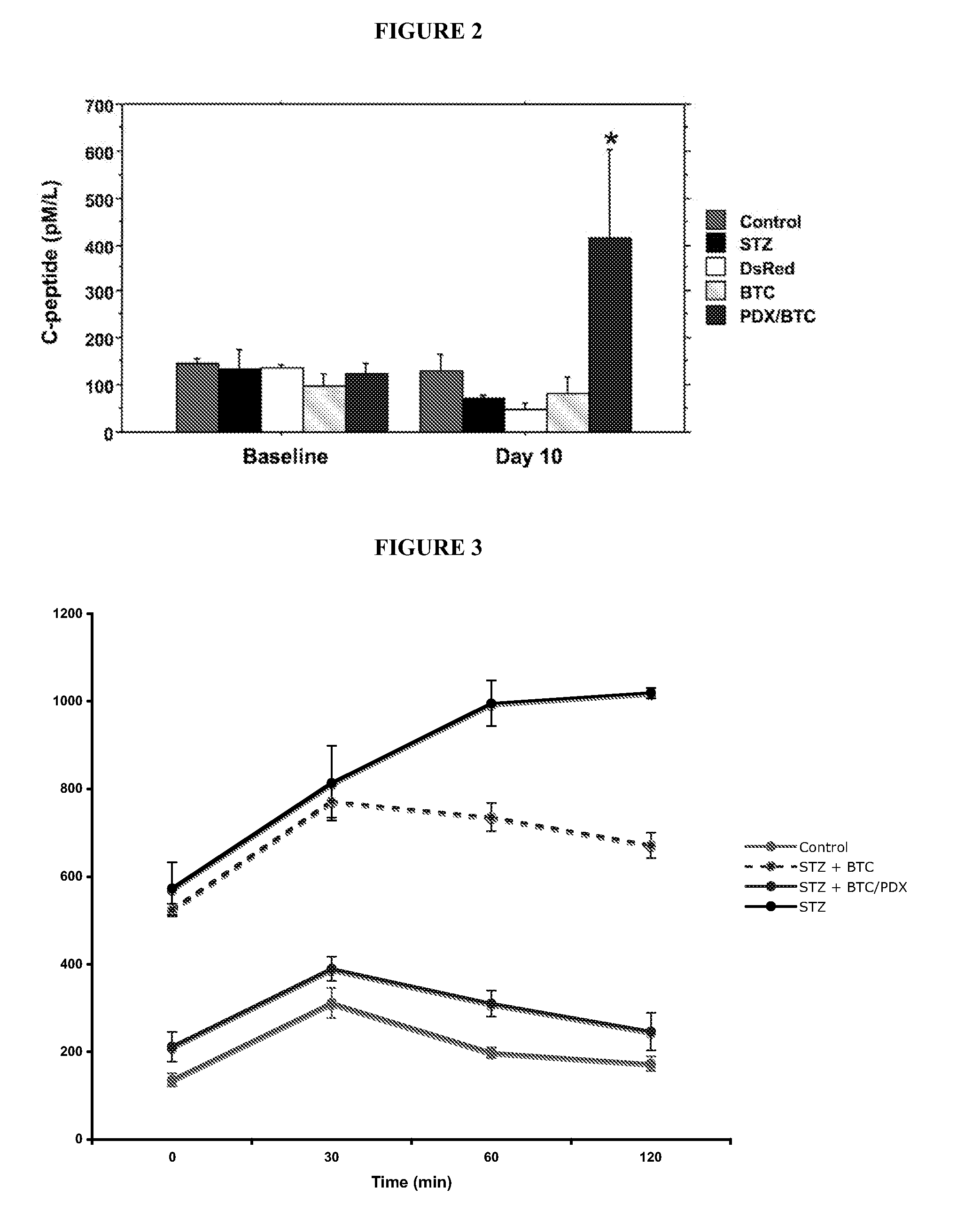In Vivo Transformation of Pancreatic Acinar Cells into Insulin-Producing Cells
a technology of pancreatic acinar cells and in vivo transformation, which is applied in the field of diabetes treatment, can solve the problems of inability to achieve long-term treatment of diabetic conditions, difficult to achieve adequate blood sugar control, and serious complications
- Summary
- Abstract
- Description
- Claims
- Application Information
AI Technical Summary
Benefits of technology
Problems solved by technology
Method used
Image
Examples
example 1
[0066]Gene therapy with PDX1 and BTC produced primitive islet-like clusters that contained predominantly alpha-cells and disappeared by 30 days. The ability to transform acinar cells into glucose-responsive, insulin producing cells shows for the first time the ability to use UTMD using BTC and PDX1 to regenerate normal islet function. UTMD offers an in vivo non-invasive method for testing candidate genes for islet regeneration in adult animal models of diabetes.
[0067]Animal protocol and UTMD. Animal studies were performed in accordance with NIH recommendations and the approval of the institutional animal research committee. Male Sprague-Dawley rats (200 to 250 g) were anesthetized with intraperitoneal ketamine (60 mg / kg) and xylazine (5 mg / kg). Hair was shaved from left abdomen and neck, and a polyethylene tube (PE 50, Becton Dickinson, MD) was inserted into the right internal jugular vein by cut-down. In a first experiment, 24 rats received one of five treatments: 1. No treatment (...
example 2
[0070]Manufacture of Plasmid-Containing Lipid-Stabilized Microbubbles. Lipid-stabilized microbubbles were prepared as previously described by the inventors (6). Briefly, 250 μl of DPPC (1,2-dipalmitoyl-sn-glycero-3-phosphatidylcholine, Sigma, St. Louis, Mo.) 2.5 mg / ml and DPPE (1,2-dipalmitoyl-sn-glycero-3-phosphatidylethanolamine, Sigma, St. Louis, Mo.) 0.5 mg / ml solution and 50 μl of pure glycerol was added to 1.5 ml vials containing 2 mg of dried plasmid and mixed well and 20 μg of dexamathasone and incubated on room temperature for 30 min. the remaining headspace was filled with the perfluoropropane gas (Air Products, Inc, Allentown, Pa.) and then mechanically shaken for 30 seconds by a dental amalgamator (Vialmix™, Bristol-Myers Squibb Medical Imaging, N. Billerica, Mass.). The mean diameter and concentration of the microbubbles were measured by a particle counter (Beckman Coulter Multisizer III).
[0071]Plasmid Constructs. Rat insulin 1 promoter (RIP) fragment (from −412 to +165...
PUM
| Property | Measurement | Unit |
|---|---|---|
| volume | aaaaa | aaaaa |
| volume | aaaaa | aaaaa |
| volume | aaaaa | aaaaa |
Abstract
Description
Claims
Application Information
 Login to View More
Login to View More - R&D
- Intellectual Property
- Life Sciences
- Materials
- Tech Scout
- Unparalleled Data Quality
- Higher Quality Content
- 60% Fewer Hallucinations
Browse by: Latest US Patents, China's latest patents, Technical Efficacy Thesaurus, Application Domain, Technology Topic, Popular Technical Reports.
© 2025 PatSnap. All rights reserved.Legal|Privacy policy|Modern Slavery Act Transparency Statement|Sitemap|About US| Contact US: help@patsnap.com



